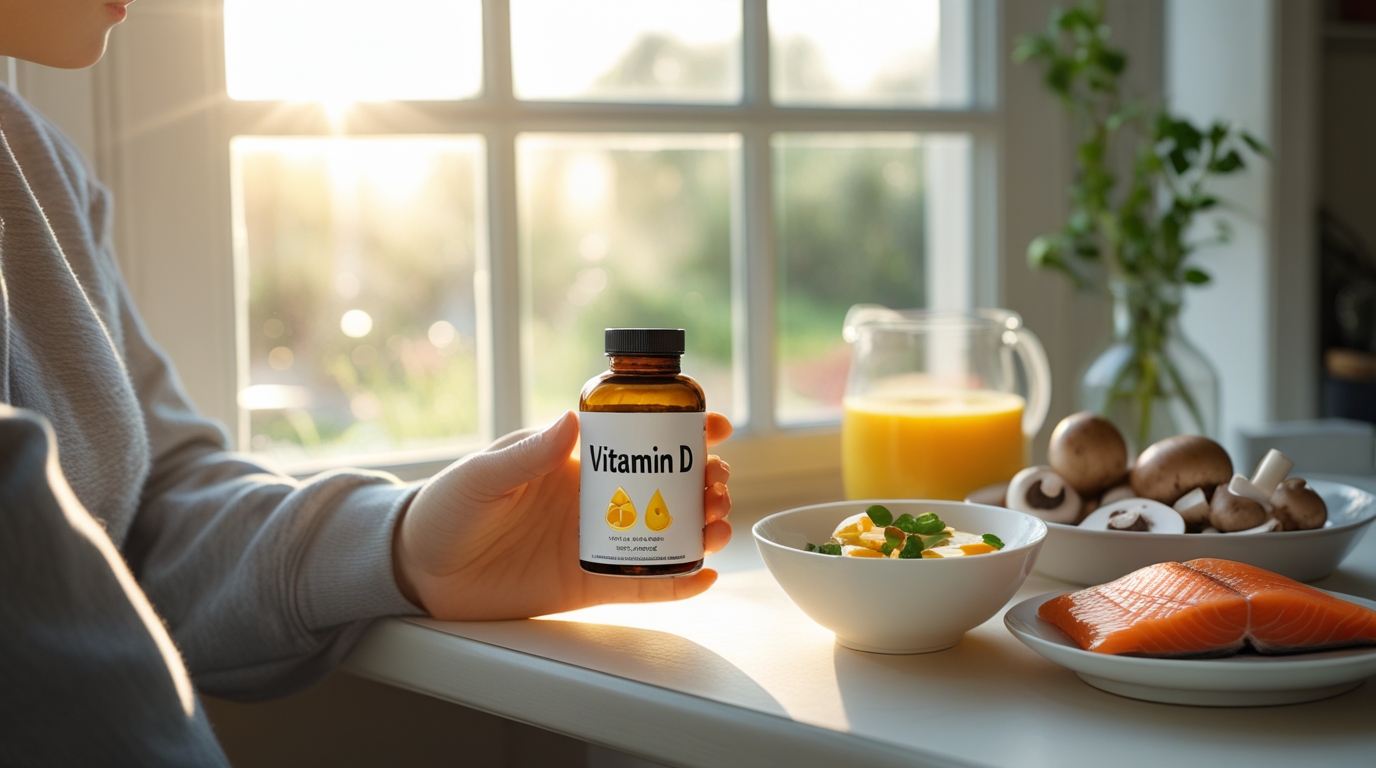Vitamin D plays a crucial role in maintaining healthy bones, supporting the immune system, improving mood, and regulating calcium levels. Yet despite its importance, vitamin D deficiency in the United States is surprisingly common. From long winters to lifestyle habits, many Americans are not getting the levels of vitamin D they need.
In this article, we’ll explore why this deficiency is so widespread, how it affects different groups, and what you can do to protect yourself.
Disclaimer: This content is for informational purposes only and is not a substitute for medical advice. Always consult with your healthcare provider before starting any new supplement.
Why Is Vitamin D Deficiency So Common in the U.S.?
1. Limited Sun Exposure
When exposed to sunshine, vitamin D is produced by the human body. However, many Americans don’t get enough natural sunlight, especially in the fall and winter, due to the rise in indoor jobs, digital lifestyles, and colder northern locations.
2. Heavy Use of Sunscreen
Sunscreen is necessary for protecting the skin, but it also prevents UVB rays that are necessary for vitamin D synthesis. Regular sunscreen users may unintentionally lower their vitamin D production.
3. Geographic Factors
For up to six months of the year, residents in northern states like Minnesota, New York, and Michigan receive little to no sunlight, which significantly increases the risk of vitamin D deficiency.
4. Poor Diet
Natural vitamin D is quite low in most diets. It’s challenging to achieve daily demands with food alone unless you consume eggs, fatty fish, and fortified milk.
5. Obesity
Due to its fat-soluble nature, vitamin D may be stored more in fat tissue by those with higher body fat percentages, which reduces its availability for physiological processes.
6. Older Age
As people age, their skin’s capacity to synthesize vitamin D declines. Additionally, seniors typically spend less time outside, which further reduces natural production.
Groups Most Affected by Vitamin D Deficiency
- Reduced outdoor activity and skin efficiency in older adults.
- Individuals with darker skin: Vitamin D production is decreased by higher melanin.
- People who are overweight or obese are more prone to store vitamin D in their fat cells.
- Breastfed Infants: They might not get enough unless they are supplemented.
- Individuals with Health Conditions: People with liver or kidney disease may have difficulty converting vitamin D into its active form.
Symptoms of Vitamin D Deficiency
If you’re wondering whether you might be low in vitamin D, check out this full article:
7 Signs You Might Be Low on Vitamin D
Some common symptoms include:
- Frequent illness or infections
- Fatigue and tiredness
- Bone or back pain
- Low mood or depression
- Muscle weakness
What You Can Do About It
1. Get Your Levels Tested
To determine your vitamin D levels, ask your doctor for a simple blood test (25(OH)D).“The ideal range is 30 to 50 ng/mL.”
2. Spend Time in Sunlight
Several times a week—especially in the spring and summer—try to get 15 to 20 minutes of direct sun exposure on bare skin.
3. Eat Vitamin D-Rich Foods
Include:
- Fatty fish like salmon or mackerel
- Fortified milk and cereals
- Egg yolks
- Mushrooms
4. Take a Vitamin D Supplement
A daily intake of 1,000–2,000 IU of vitamin D3 is beneficial for most people. It’s particularly crucial in the cold.
Best Vitamin D Supplements in the United States
Top Amazon Pick: NatureWise Vitamin D3 5,000 IU Softgels
5. Understand Your Dosage Needs
Vitamin D needs vary based on age and health status. Here’s a complete dosage guide:
How Much Vitamin D Should You Take Daily in the United States?
FAQs About Vitamin D Deficiency in the United States
Q1: What level of vitamin D is considered deficient?
Less than 20 ng/mL is deemed inadequate. The ideal range is between 30 and 50 ng/mL.
Q2: Can vitamin D deficiency be reversed?
Yes, with supplements, dietary adjustments, and appropriate sun exposure.
Q3: Are Americans more likely to be deficient than people in sunnier countries?
Yes, particularly in metropolitan locations with little sunlight and in northern latitudes.
Q4: Is vitamin D3 better than D2?
Yes, vitamin D3 is more effective at raising and maintaining blood levels.
Q5: How long does it take to correct a deficiency?
Depending on the intensity and dosage of the supplements, it could take a few weeks to months.
Conclusion: Tackling Vitamin D Deficiency in the U.S.
In the U.S., vitamin D deficiency is more common than most people realize, and it can have serious effects on your health. Millions of Americans aren’t getting enough, whether due to their diet, lifestyle, or where they live.
The good news? It’s easy to fix. Get tested, get some sunshine, eat better, and consider a quality supplement. Your bones, immune system, and energy levels will thank you.
Call to Action
Don’t wait to feel better.
Start today with a high-quality supplement from Amazon like NatureWise Vitamin D3. And be sure to read our related guides:
How Much Vitamin D Should You Take Daily?
Best Vitamin D Supplements in the United States
Trusted Resource: Learn more from the NIH Fact Sheet on Vitamin D



